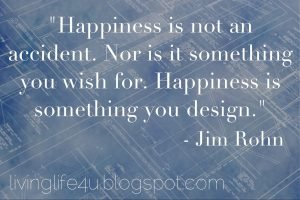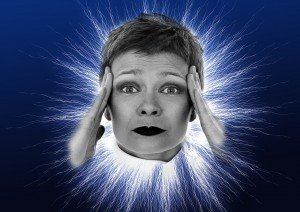
Energy, Emotions and the Past
It is of deep importance at this time in human evolution for those committed to self growth to work on releasing and transmuting their own stagnated energies held within the body’s energetic system, created when we experience personal traumatic events.
Unresolved personal traumas cause blockages, imbalance and leakages in our energetic systems and affect our individual interpretation of experiences in the present moment. The influence of the past upon our thoughts and behaviours (either conscious or unconscious) in the now, shapes our daily experiences, actions and reactions, and thus can keep us stuck in cycles of negative behaviours creating negative experiences creating negative self beliefs.
Energetic “dis-ease”and negative self beliefs can also manifest as physical or psychological illnesses and disorders; which while they may be treated with modern medicine will rarely be healed completely, until the underlying negative beliefs or traumas creating emotional states of sustain feelings such as anger, shame, guilt or hate have been healed and released. Like sand bags released from a hot air balloon, releasing these blocking emotional states will allow us to rise up the vibrational frequencies.

Negative and Positive Emotions – What does this mean?
We describe emotions in terms of negative and positive, but rather than therefore view them as “bad or good” it is more useful to view them simply as defining states of being.
Positive simply meaning ease of flow, lightness, forwards motion, progressive. Positive is allowing, letting go, embracing, liberating. It is balance and harmony with our centre or core sense of self. We feel positive when our beliefs thoughts and feelings are in agreement with our behaviours and experiences, so we feel in balance.
Negative is imbalance and disharmony, stasis, heaviness, resistance and regressive. We feel negative when our beliefs are in a state of incongruence or disagreement with our experiences. We move further away from our centre in negative states, and this distance between who we truly are and who we think we are causes emotional pain. Negative emotional baggage will slow us down; keep us in a state of depression; stuck in situations we don’t wish to be in; create obstacles, illness and difficult experiences.
Healing occurs when we reach a new level of understanding and awareness of ourselves allowing the issue causing the negative response to come into better alignment with our selves, and thus we transmute the energy into positive allowing us to learn, grown, and feel more of the joy that emotional alignment brings, discovering a new perspective on an old issue.
The nature of vibrational attraction will draw experiences for us that seek to reveal the lessons needed learning for us to progress. The more we miss the messages, repeat mistakes, the more intense the manifestation will be, until we die and return to it next life, or, preferably, when we eventually learn the lesson, thus free the blocked energy and propel forwards in our lives by the released positive force and higher level of frequency alignment, wisdom and ability.
All we have experienced in the past defines how we experience our now.
We can choose either to use the past to empower us, or allow it to hinder us.
Either way our relationship to our past always shapes our now.
As emotional vibrational beings we are always interpreting the world around us through our emotional response to it in a constant cycle of action and reaction. We can never change past experiences, but we can change how we feel about them and in turn change how we react to similar happenings in the now.
In this article I intend to share useful techniques for improving levels of happiness and well being through better understanding the inner processes taking place within. Thus through gentle self observation we can acquire greater control of our own psycho-physiological states. Unifying mind, heart, body and soul will lift the self to greater levels of awareness, understanding and connection to all that is
We are ever evolving beings and the degree of accessible wisdom to self is directly related the level of harmony or dis-harmony within us. Increasing inner harmony increases our vibrational frequency, and enables the conscious mind to access and understand, in increasing depth, higher levels of knowledge.
The balance between the layers of various bodies and energy centres that makes up the whole self determines our level of frequency alignment and thus increasing inner harmony provides greater and greater access to, and, understanding of the eternal wisdom contained within us all as, Immortal Spiritual Beings (ISBe’s).
I often find that revisited teachings previously found too difficult to grasp, after a period of self growth and spiritual development, will become clear, often with a level of clarity that was absent previously. Many spiritual writings contain multiple levels of spiritual truths, and so often we will discover deeper and deeper levels of understanding when studying the same writings over time, as we improve our level of vibrational attunement.
Science of meditation and thought selection.
Although we can relate a lot of the following to spiritual practices, the processes have become increasingly understood through advancement in modern sciences. We can see that the methods contained in so many ancient spiritual teachings can be related to current understanding of human psycho-physiological processes.
FACT -We are emotional beings. We read the world around us by reacting to the emotional response we have to our thoughts, either consciously or unconsciously. Our natural state in no-thought is contentment, neither acting nor re-acting, but simply observing and being. Our thoughts evoke our emotions. Thoughts and only thought can evoke negative emotions. There is no natural state of anger or fear. So without thoughts, negative emotions cannot be sustained. Meditation techniques used to clear the mind by learning to focus singularly on one external sensation such as the breath; separate “I” from the constant mental chatter of the mind, rather than identifying, being immersed in and affected by every thought, we realise they are just words, and so can drastically reduce negative emotional states by reducing or increasing our reaction to the words that flow through our minds.
Thoughts are like a train of statements, descriptions and commentary running through the mind. Its a constant stream of chatter, and habitually our awareness will be fixed on the chattering train so being aware of nothing but the train as it rattles noisily through the mind.
Through the practice of meditation we are able to disengage our attention from the train and begin to notice that it is a train (objectivity) and then as we stop being fixated on each “carriage” of thought we begin to notice the gaps between the carriages, revealing an enormous space that isn’t filled with the noisy thoughts constantly rattling through our minds. The whole mind is actually still, expansive, peaceful and open. Its the huge space of our creative minds, and as we notice this we realise that in order to OBSERVE the train, the carriages, and the scenery beyond we have to have an observer.
It is then we realise that we ARE NOT our thoughts, but simply they are a phenomena of the mind’s constant need to explain, categorise and analyse every experience we have, but it is completely possible to detach from these thoughts and simply observe them without needing to react or be affected by them.
So instead of just being aware of the noisy train of thought and nothing else..
…. we are able to see the beautiful scenery around the train, and realise the “train of thought” is simply a small, very transient part of the whole, much greater, and expansive sense of self which is still and peaceful, and soon the chattering noise retreats into the background.

Thought selection, rejection and reframing
To obsess or not to obsess?
Whatever we give most attention to we create more of. By rejecting we create that which we reject in order to reject it. It will never leave us as long as we give power to it, and thus create it. Only by giving concious attention more towards that which we love and desire can we allow that which we dont want to fade into non-existence by our non-attention to it.
I may have a random thought that I want to snog a person I hardly know in a very , or, trip up a cheeky teenager in the street, or, strip off my clothes and jump in a pond in a busy park; or wonder what it would be like to pick up that knife and stab someone but none of these define me. Thinking these thoughts does not mean that I WILL do them. So here I have a choice, and its not about what I do, but what I think about what Im thinking.
I can obsess and worry that Im having these bizarre spontaneous urges, that if acted upon would cause issues for me. added anxiety upon this solo thought adds a few “carriages” to what may have been a transient flicker of thought that I let go. So instead it becomes a much longer, sustained “train” that then causes an actual physiological response such as increased heart rate, raising of blood pressure, tensing of the muscles, release of cortisol the stress hormone, the body readies for fight or flight mode, and so on.
Noticing this physical reaction I further focus on the source thought, and the thought that “Im thinking about something that is making me anxious, and this focus causes my anxiety levels to increase, as I begin to worry about such a bizarre thought, and start to think if Im having this response I must want to do it, and there is something wrong with me, and I obsess, causing the release of more cortisol, the chemical messenger that tells my body I may be danger and so on and so forth. So this spiral can continue until I can manage to detach from the thought and simply let it go as a nonsensical babbling of the mind.
In reverse
So. I might have this odd thought like, ” I want to snog this person I’ve just met”, I may worry, but alternatively I may follow it with a thought that says “ Well I must be such a loving person that I want to show this love and kindness. I know its not appropriate to snog him, so I will shake his hand and smile warmly instead.” . Or I may decide to pay the thought no heed whatsoever, and allow it to rumble off into the distance never to be thought of again.
The next thought that comes along might be “Its a nice breeze blowing as I walk”. I like this thought and the feeling it evokes so I do focus in on it. Expanding it with more thoughts like, “ The cool breeze actually makes me feel so calm and relaxed, It’s a lovely moment I’m having”. As I think more of these thoughts my brain releases dopamine and increases my feelings of calmness and content, and so give rise to more positive thoughts which amplify my positive mood.
Select and reject
So the more we become able to step back from our thoughts, and detach and select, and reframe and focus on the one we like, we can begin to select the thoughts that most align with the interpretation of our experience of reality we wish to have. This is not about denial or being delusional. Being more present and aware in the momenet means we are actually more effective in dealing with difficult situations as they arise because we have less obsessional thoughts about things that may not be real, or thoughts that are just transient, occupying our time and mental energy.
Worrying is a complete waste of time and effort, that only brings us pain, anxiety and upset about things that we imagine MAY happen in a future we concoct in our minds, but in actual fact may never happen at all. In fact it may be hard to believe, but due to the highly selective programming of our minds causing a filter and focus effect, we can actually increase the chances of our feared future taking place. Of course this also works in reverse, and if we program our minds to filter and focus on all that conforms to a positive and happy now, increases the chance that this will be the future that we experience.

The spiral loop
As a very simple example, I may have trouble finding my keys. As I’m searching Im saying to myself “ I’m ALWAYS losing my keys!”. I’m in a hurry, I don’t want to be late, I start to panic, I recall past times that I couldn’t find my keys for ages and I was very late, and I start to think that what if this is one of those times. I panic more, my physiology starts to shift, heart rate, pressure, stress, cortisol, a spiral loop of increasing anxiety. Im looking so frantically now that I’m not really LOOKING, I’m telling my mind “ I always lose my keys!”, I’m starting to shout, to revert to a child who can’t get his way, the sheer frustration, where are MY KEYS!
BE Angry and stupid OR calm and sensible.. we physically and mentally cannot do both!
 High levels of anger reaching into fury actually triggers the body’s fight or flight response. This means all the blood rushes to the vital organs, we get a shot of adrenalin to enable a very fast exit or attack, and in order to cut out the analytic aspects of decision making, which when under attack or in danger could make the difference between life or death, the higher functioning thought process of the cerebral cortex actually shuts down. This means quite simply the more ANGRY we are, the more STUPID we become, and the less able we are to reason, debate, or make well informed decisions.
High levels of anger reaching into fury actually triggers the body’s fight or flight response. This means all the blood rushes to the vital organs, we get a shot of adrenalin to enable a very fast exit or attack, and in order to cut out the analytic aspects of decision making, which when under attack or in danger could make the difference between life or death, the higher functioning thought process of the cerebral cortex actually shuts down. This means quite simply the more ANGRY we are, the more STUPID we become, and the less able we are to reason, debate, or make well informed decisions.
So, looking for my keys, if I instead stop, breathe, pause, breathe calmly, and think clearly, and with feeling, “I can find my keys easily”.. I tell my mind “I can”. Important here is allowing that feeling of relief and pleasure I know I am just about to kind my keys.
I know that I was the one who put them where they are right now, of course. I was the one who did it, so somewhere in my mind is the knowledge where my keys are. As I pause, and breathe, and calm down, my hand automatically goes to my trouser pocket. and slides inside, and there are my keys. Truth is as long as no-one else moved the keys somewhere in my mind is the knowledge of where my keys are. As soon as i let go of panic and allow my body to look for them I WILL find them.
This is the same with ANYTHING we start to tell ourselves. We may screw up in an interview, in a test, in a first date. Immediately we are reverting to the last time this happened and how badly it went, or immediately the other person is our Dad or Mum, or an old teacher, a partner, who always told us how useless we are; its the trigger for the shame, the anger, the hurt, that all comes back. We project onto the situation, we regress to the child layer who felt this first, we react as that memory layer, we think “What’s the point in denying it?! They were right, I think just the same! Im useless, its worthless and nothing will change. Its who I am. Thats me. Ive always been like that” How often have you said those words in justifying a behaviour or trait? We identify it, they absorb and reflect it, so feedback to oneself affirms it, and so on, repeating the cycle of affirmation, creating the picture of reality in our minds that we project onto the world.
The truth is its not the same experience, they are not the same people, unless they are. Im sure most adults can affirm to having regressed to a child state when visiting and interacting with the people we grew up with. After all thats with whom we had most of our formative experiences.
However you are not the same person now, with so many more layers of experience stacked beyond that child you were, you have become something more. Nothing is the same. Every single moment is new and our past is just a story we tell ourselves, and each persons version of the story is different; all our beliefs are just thoughts we keep thinking. There is nothing real except now, in your mind, through your spirit and yuour soul, and nothing is fixed, every experience is fluid and transient moving to the next. If we can just catch hold of that flow, and nudge it in the direction we would like to head, we can shape our experience of reality to whatever we desire. We have the power to change and be whoever we want at any moment. “Every day is a chance to turn it round!”.

The fragmented self
So it sounds easy doesn’t it? I just stop relating each experience in the now with the past and how I reacted then, and treat each moment as new. Easy in theory but so then what’s stopping you?
Our minds/full conciousness are so incredibly complex and vast that like the lines in a tree, for each year, life stage, and event / trauma / significant experience that we have, a new layer, or self, is formed in the personality conciousness. So we have a baby self, a toddler self, a preteen self, and a teen self, our first kiss self, a scared self who got mugged, a best birthday self, and so on. In fact we may have many more separate selves occupying the vastness that is our unconsciousness than years we have lived. In a healthy well balanced person who has experienced few major trauma’s in their life. A person like this is very, very rare. As a since departed good friend and teacher once told me “We are all damaged goods, its how we grow from each experience that matters) all their selves will be integrated and fully healthy as part of the whole, but will still pull us one way or the other at times, and one day a positive happy self will be dominant, but the next one who isnt so happy may take over.
However most of us are not so lucky, and over our lives we splinter and separate from smaller parts of ourselves who due to that particular experience will hide away in the subconscious, away from our conscious memory, feeling alone and scared, and living always in that moment that caused them to run, retreat and decide real life is too scary, or simply get stuck in the dream conciousness until we find them as adult self and bring them back home.
Not only does this mean that the adult self is incomplete, and often missing parts of the self that are so important, like the childlike sense of fun, or the toddler’s curiosity, or the baby’s ability to really cry, laugh and scream in quick succession and move on without holding on to any of it. It also means that even though we don’t consciously recall why we always have a fear or a phobia of things related to the event or experience that caused the younger self to hide away, we are still affected by it and thus we may have an inexplicable fear of any loud noises we cant control, due to the roar of the flames when we were caught the bin of fire when playing with matches as a young child.
Just because we may recall the actual event as well does not mean we recall the details, or the trauma we felt at the time. Additional trauma is also often caused by the adults reaction to our innocent mistakes, as children feel adults emotions very powerfully, and if an adult is visibly scared or shaken then the child will likely be terrified.
As an adult we may look back and think “Oh that was nothing” but as a small child it may have been a terrifying experience that actually made us feel scared for our lives!
Thoughts and Mood Hormones
FACT – Thoughts invoke emotional states which produce chemical messengers (hormones) which travel round the body and attach to cells using receptors which informs the rest of the body what emotional state we are in. So although thoughts begin in the mind, emotions are not confined there, nor are they sustained there. Most of our organs have a physiological state that changes depending on mood, thus we feel physically depressed or physical sadness, as well as happy, loving, joyful which enables the cycle of feeling better or worse by noticing the psychological reaction to it in our body. the heart actually has almost as many neuronal receptors as the brain so we do actually FEEL and THINK with our hearts).
Overtime cells become adapted so the receptors can only attach to the most dominant hormone produced. So if we maintain a state of depression after a time the cells will only lock onto the chemical hormones which maintain depressive states. Hence why when we ARE depressed for a prolonged period it can seem so hard to lift out of it as the chemistry of the body become more predisposed to depression.

The good news is that this also works in reverse, so if we can maintain generally positive emotional states for long enough the receptors will adapt to only be able to lock onto chemical hormones that make us happy. This means that once you have maintained a healthy positive mood for a majority of the time it becomes harder and harder to go back into a depressive state unless you maintain, focus on and repeat the depression triggering thoughts over an extended period of time.
Positive visualisation or negative? We are always doing one or the other.
We are always visualising possible futures for ourselves so its much more desirable to do this with intention and purpose based on our hopes, rather than allow the mind to invent visions based on our deepest fears.
The chemical response in our bodies to positive or negative emotions adds some new understanding on why using positive visualisation can be so effective. If we can intentionally create visions in our minds that we immerse into and use to actually evoke positive emotional responses then after time the body’s chemistry becomes more positively charged as it reacts to the positive thoughts we are having more often, and so we improve or worsen our resting emotional state by what we think of most.
For example: By spending a short time relaxing and building a clear vision focusing on happy memories we can use them to bring that emotional state into the now. Using the feeling we had after a successful performance or; when we found out we got the job, passed our exams; when we get off the plane arriving at our holiday destination, can help us to create an emotional trigger which we can then transfer to a vision we have of a desired future. Use this emotional memory to help in creating more of these feelings we want to have in response to optimistic visions of a hoped for future; such as getting that perfect job, promotion; finding the perfect new home.
Feeling feelings about feelings
We can load feelings negatively by worrying about the worry that we worry about, and create more worry, as the worry increases. The body reacts by tensing, heart, frown etc, and we notice and worry some more, the fists clenched, increasingly tense, and we increase the worrying feeling again and so on.
However, we can also feel a little good about something, and feel good that we notice we are feeling a little better, and then noticing this makes us feel a little better about feeling better, as we notice we can feel better we feel a little better still, and then we feel a relaxing in the body and feel relief as we start to feel good, and we notice we felt good for second there, and then its 2 seconds, and we relax more and smile, we notice the smile and the smile makes us feel better, and so on, and on.
Its all about creating the emotional state these visions make us FEEL and really FEELING it as if its happening right now. By purposefully immersing ourselves in a positive vision of a future event for a short time we can start to change the direction of emotional flow from negative to positive, but if we allow fear to rule we will, without realising, do the exact opposite and immerse in a vision that increases our fear and anxiety and thus impact upon the physical chemistry of the body and creating more negative physical responses.
Thoughts are the triggers for emotions. So when purposely creating a positive vision the key is to really FEEL the emotions the thoughts evoke, and so in reverse we catch the negative thoughts early, change how we see them internally, reduce the amount we dwell on them, so reducing the emotional and chemical response, reducing the hormones being released by the emotion, and over time changing our biochemical balance to have more happiness orientation.
This is also why the reduction technique (see motivation booklet) is so good as it helps us identify the way that we build up and dominate ourselves with negative visions. We always use visualisation regardless of whether we do it consciously or by design. In our minds we create images of situations we are thinking about. When we think about something negatively we usually do it subconsciously and see the situation as huge, loud, above us, dominating, huge, bold, clashing colours etc, evoking a natural emotional and physiological response causing a flight or flight response releasing cortisol ( stress hormone), produces fear, anxiety or feelings of isolation, hopelessness.
So by reversing this process, making vision of situations we are concerned about smaller in our minds, below us, quieter, pale colours or black and white and so on, we can vastly reduce the anxiety we feel about it, until it is gone.
Intentionally we then create visions of what we DO want to happen in full colour, big, bright, exciting, or whichever applicable positive emotion. So the reduction technique reverses negative feeback loops, making scary thinsg less and so, and enhancing a desired perspective and positive response to the visualised situation. This therefore starts to increase dopamine (pleasure and reward hormone) and after a while our cells adapt to only lock onto dopamine instead, and so cortisol may be produced but much less of it actually locks onto cells.
I’m not talking about always being annoyingly happy all the time, to the point of denial, as often those who outwardly display such behaviour are often masking deep insecurity, but simply allowing a few minutes a day to really intentionally evoke happy emotions, giving more “airtime” to things that make us happy, which over time brings our baseline up so that our resting state is more and more in the happy/contented zone.

In relationships…
This psychology outlined above is also an important tool in intimate relationships and our view of them and how we describe them to our partner. So the 3 to 1 rule is important to follow to keep the balance on the positive ie highlighting and praising 3 good things for every 1 bad or negative. Its easy to become negatively oriented so that the majority of behaviours we notice, and point out, become the majority of behaviours the person who is the focus of our feedback displays, and / or that we notice. If you see it in reverse, if you had someone remind you daily of the things you do wrong then its foremost in your mind, you worry about it, and thus highly increases the odds that it becomes the majority behaviour you engage in, which the evokes a more powerful criticism from the other person, “ I told you clearly but you still….” and the thought “ Wow he/she was right! I am/do…….” and actually reinforces the cycle. It works in return towards us from them, and also adjusts our focus to notice mostly that which confirms our opinions each other.
Really focusing, describing, amplifying, and expanding on the positive behaviours, and even going into great detail about DESIRED behaviours has the opposite effect. If described to the extent it creates an emotional response in you both, then it anchors in in the mind and becomes something that is very likely to become truth, even if it isn’t already.
So, for example, telling someone daily how much you love the way they are so generous and giving and you love little surprises and gifts they sometimes give you etc will likely mean that after a short while they will need to become this and do will do this… and vice versa.
Join this “thinking” work, positive self talk and self and partner praising with physiological exercises and positive postures, healthy eating and regular exercise, then you have a powerful positive force inducing positive spin up the spiral, and in the cyclic nature of things you re-experience life from a positive or neutral perspective.
The potential for an awakened and aware couple to positively spin themselves up the spirals of frequency by positively influencing each other through continuous, caring and consciously selected reciprocal feedback, is incredible.

Resources
Hynotherapy tracks
Can be used anywhere like train/plane/chilling in the park etc but best to be Lying down and where you are unlikely to be disturbed. Needs headphones. Dont underestimate the power of these to make subtle but very effective shifts in thinking and emotional well being just by regular listening (eg . once every 2-3 days for 3 weeks). You dont have to consciously listen to every second of them, but just allow yourself to drift off with the words.
Positivity (30min with no awakener so great for bedtime to use before sleep)
https://soundcloud.com/psychospiritual/ultimate-positivity
The 3 C’s – Calm Confident and Collected.
Shorter(15min)+ track to reduce negative thinking cycles with awakener. Great just before interviews or at times of dark thoughts you cant shift.
Re the “chakra tones” in the track – You may not believe in chakras, but regardless negative thoughts and emotions do cause disharmonic brain frequencies, so simply see the tones in the track as harmonic frequencies that entrains the brains frequency into greater emotional harmony and so soothes depressive thinking. If you are not giving attention to it you cannot feel it.
https://soundcloud.com/psychospiritual/ultimate-positivity
The 3 C’s bedtime
Same track with no awakener
https://soundcloud.com/psychospiritual/the-3cs-bedtime-hypnotherapy
TED Life Hacks series on netflix
Excellent series of simple tips and tricks to lift mood and increase well being
https://www.netflix.com/WiMovie/70270742?trkid=50000009
Especially recommend Amy Cuddy and Jane Mcgonigal
Subscribe to our post updates - Don't miss a thing!!








